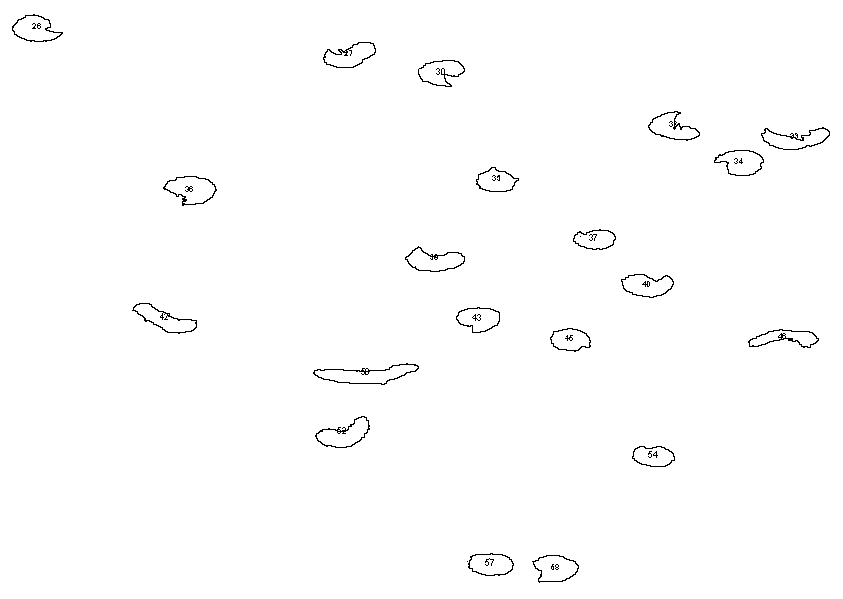Tubular scleroderma guani counting method and application thereof
A tube-type swollen-legged bee and counting method technology, which is applied in the field of image recognition, achieves the effect of small external interference and large error in solving time-consuming
- Summary
- Abstract
- Description
- Claims
- Application Information
AI Technical Summary
Problems solved by technology
Method used
Image
Examples
Embodiment 1
[0048] Example 1 Basic Mode
[0049] The specific tube counting method for Strophaga is:
[0050] (1) Place the tube containing the tube-type Sclerophyllum sample at -20°C for 24h-48h to ensure that it does not move during subsequent operations;
[0051] (2) Take out the frozen tube scorpion bee, peel off the bee and the feed with tweezers, and discard the large pieces of feed impurities;
[0052] (3) Put the tube-type scorpion bee on a sieve of 40 meshes, and shake it lightly. Small impurities leak under the sieve to remove small impurities, and the tube-type scorpion bee is basically left on the sieve;
[0053] (4) Filter paper (Length*Width=30cm*30cm) Adhere the filter paper to the table with double-sided tape, and it needs to be completely flat; the tube-type Sclerophagus after sieving is placed on the filter paper, placed independently between individuals, intelligent Take photos with a mobile phone or camera, and the pixels of the photo are 4032*3024 or 3024*4032 (width*height), ...
Embodiment 2
[0058] Example 2: Optimization of sieve mesh
[0059] The main steps are basically the same as steps (1)-(3) in Example 1, except that the number of meshes selected in step (3) is carried out according to Table 1 below. In this example, multiple groups of S. scorpione samples to be counted were tested.
[0060]
[0061] Test, the test results are shown in Table 1. The results showed that the tubular scorpion wasp passed a 20-mesh sieve, and the number of insects under the sieve was 22-80; after a 40-mesh sieve, only one bee fell under the sieve, and the amount of impurities on the sieve was small; On the sieve, the amount of impurities on the sieve is slightly larger; after passing a 100-mesh sieve, although all the bees are on the sieve, the amount of impurities is higher. The photos are not suitable for software counting. Therefore, the mesh number of the tube-type Sclerophyllum sieve is selected to be 40, and occasionally the bees that fall under the sieve can be retrieved wit...
Embodiment 3
[0062] Example 3: Counting the same photo with different minimum sizes
[0063] (1) Place the tube containing the tube-type Sclerophyllum sample at -20°C for 24h-48h to ensure that it does not move during subsequent operations;
[0064] (2) Take out the frozen tube scorpion bee, peel off the bee and the feed with tweezers, and discard the large pieces of feed impurities;
[0065] (3) Put the tube-type scorpion bee on a sieve of 40 meshes, and shake it lightly. Small impurities leak under the sieve to remove small impurities, and the tube-type scorpion bee is basically left on the sieve;
[0066] (4) Filter paper (Length*Width=30cm*30cm) Adhere the filter paper to the table with double-sided tape, and it needs to be completely flat; the tube-type Sclerophagus after sieving is placed on the filter paper, placed independently between individuals, intelligent Take photos with a mobile phone or camera, and the pixels of the photo are 4032*3024 or 3024*4032 (width*height), but the tube-shap...
PUM
 Login to View More
Login to View More Abstract
Description
Claims
Application Information
 Login to View More
Login to View More - R&D
- Intellectual Property
- Life Sciences
- Materials
- Tech Scout
- Unparalleled Data Quality
- Higher Quality Content
- 60% Fewer Hallucinations
Browse by: Latest US Patents, China's latest patents, Technical Efficacy Thesaurus, Application Domain, Technology Topic, Popular Technical Reports.
© 2025 PatSnap. All rights reserved.Legal|Privacy policy|Modern Slavery Act Transparency Statement|Sitemap|About US| Contact US: help@patsnap.com



